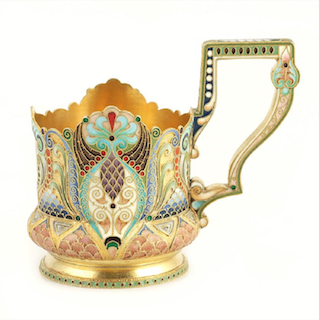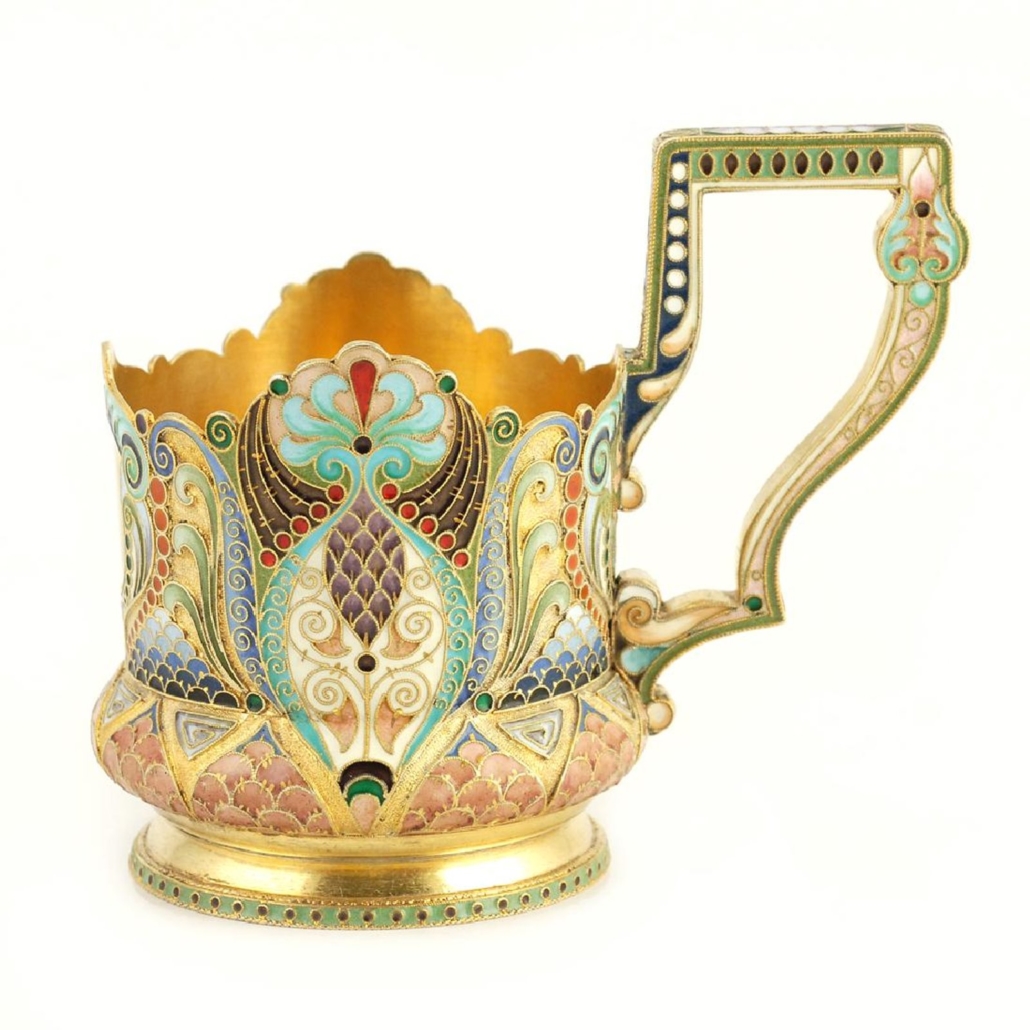
NEW YORK – Long a specialty collecting niche, Russian enameled silver artworks exhibit some of the finest artistry of the entire decorative arts spectrum. John Atzbach Antiques in Redmond, Washington, is a global leader in the field of Russian enamels and has handled many exquisite examples by Faberge and other prestigious workshops. Auction Central News spoke with one of John Atzbach Antiques’ specialists, Karen Kettering, Ph.D., to learn more about the field.
What are some of the most desirable types and examples of Russian enamels?
As in so many areas, the largest items or full sets are the most valuable. The kovsh (plural is kovshi) is a Russian bird-shape drinking vessel dating back to the 13th or 14th century. Tsars gave presentation kovshi to loyal retainers in thanks for outstanding service, and a large enameled kovsh or bowl was a traditional housewarming or work-anniversary gift in Imperial Russia. These remain among the most popular of forms.
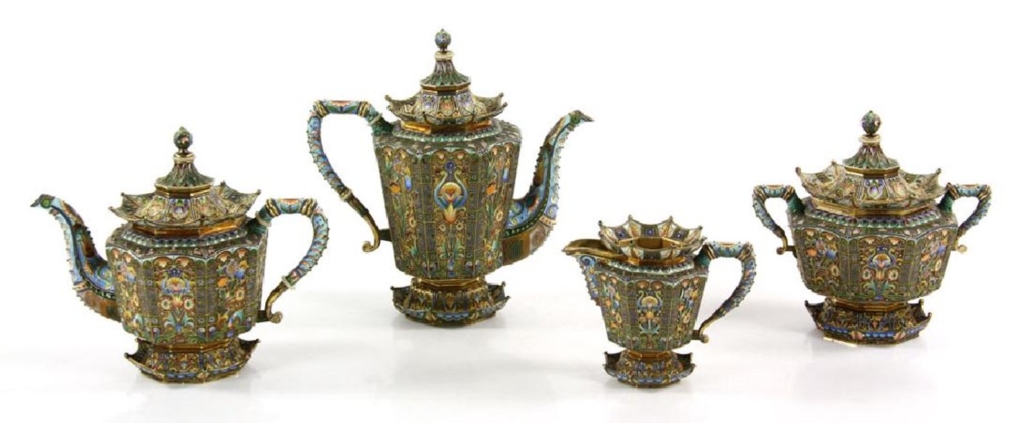
Punch, liqueur, and tea sets are the most prized. A tea set could include some combination of a teapot, a hot water pot (to add hot water to taste to a tea that was brewed very strong), a milk or cream jug, a sugar bowl, a basket for cakes or cookies, a small “waste bowl” for tea leaves, and sugar tongs, tea spoons, and/or lemon forks. The upheaval in Russia in the 20th century resulted in the loss of pieces and parts of services; it is very difficult to find an entire service intact.
Lots of people collect only boxes or cases. Cigarette cases are the most common shape and for enamel aficionados. They offer a small ‘canvas’ on which an artist could experiment with the most complex shapes and colors. Many collectors purchase the distinctive and large Russian spoons for a similar reason: the backs of the spoons offer a small space in which to work out complex designs. The handles are also usually ornamented.

Are there certain makers/workmasters whose pieces are the most collectible?
Works by Feodor Rückert, the primary supplier of cloisonné enamels to Fabergé, are the most sought after, and particularly works made in his late style. It is sometimes called the Russian Style or Pan-Slavic. (Pan-Slavic in relation to enamelwork is a bit confusing. It rightly describes a late 19th Century political movement and seems to have crept into Anglo-American auction house use at some point in the 1960s or 1970s.) In the period in which he worked, it was known as the ‘stil modern’ (modern style) and described the Russian version of Art Nouveau, which is much closer to the Wiener Werkstätte or Jugendstil works than what most readers envision if you used the term. His workshop can be distinguished by the unusually large range of colors, including many tertiary colors, extensive use of applied deep-black cloisons and beads to highlight designs, and highly stylized flowers, fruits, or trees very much informed by Russian peasant design. This frame is an extraordinary example.
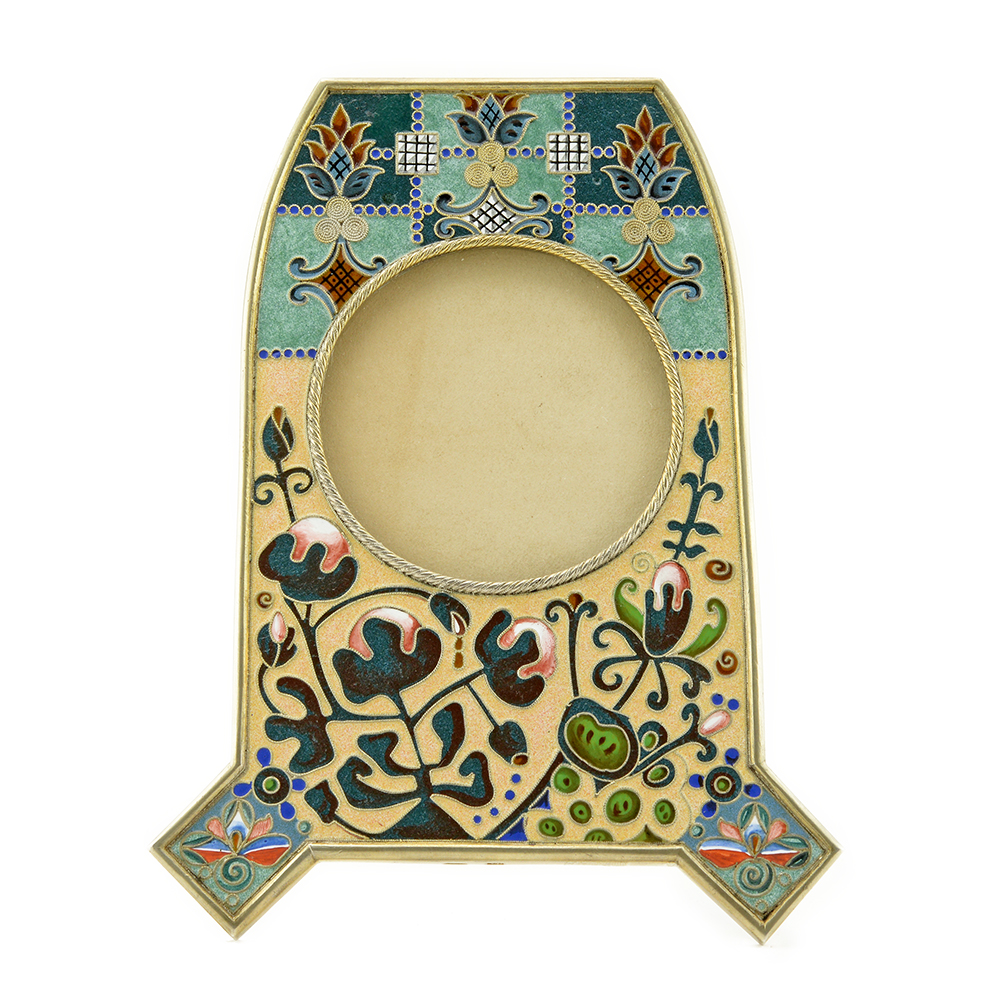
Works with both Rückert’s mark and the mark of Fabergé are the most desirable. After that, collectors are most interested in works by Ovchinnikov, Khlebnikov, Grachev, Kurlyukov, Kuzmichev (who supplied Tiffany & Co.), and Maria Semenova (also spelled as Semyonova).
Objects with painted or en plein enamel plaques are always desirable. Those by Rückert, the 11th Artel, or Ovchinnikov are best known, but smaller workshops like that of Semen Kazakov in Moscow also produced extraordinary works.
What are some of the most important factors/attributes in determining a piece’s value?
Many Russian enamels were made in very small numbers or are unique – there are a lot of cloisonné pieces with floral ornament in red, blue, and white, of course. The quality of the design, and the skill with which it was executed, are paramount.
At the same time, the enameled surfaces must be in the best condition possible. Enamel is essentially glass, and there are usually a few tiny areas of loss visible under magnification.
Pieces with designs drawn from Russian peasant design or architecture tend to be more desirable than objects with more generalized designs.
An interesting or important provenance always increases value. Any connection to the Russian Imperial Family or their European cousins is desirable, as well as ties to prominent Russian, European or American collectors.
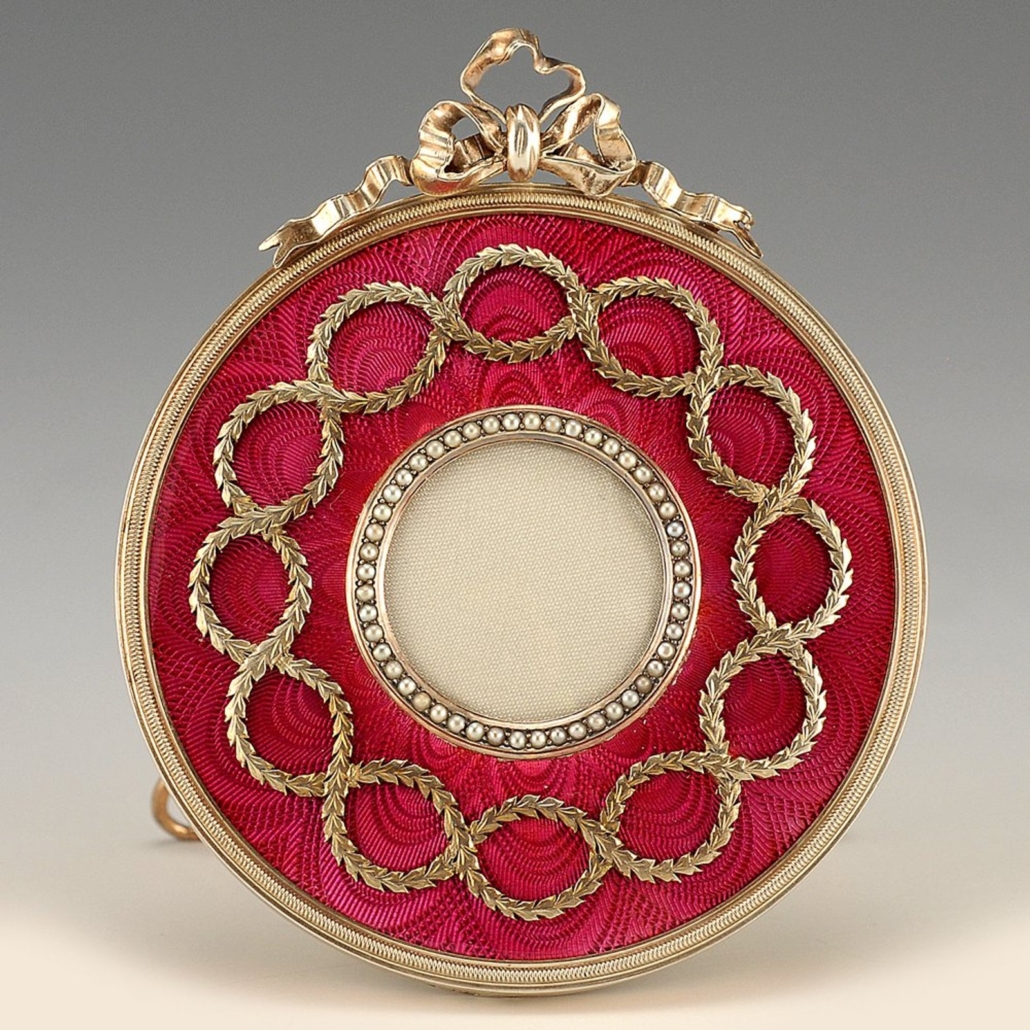
What should new collectors look for and beware of?
Each workshop had a unique color palette. Try to get familiar with those colors so you can detect a potentially problematic piece.
There are a lot of online resources on hallmarks and makers’ marks. They’re very useful and interesting, but they’re also a good resource for people who might want to deceive. If something looks too good to be true, it probably is.
Areas of loss and repair are visible under blacklight. If you’re buying online, work with a reputable dealer and make sure to ask about any areas or repair or loss. Reputable dealers will always be willing to discuss all aspects of an object’s condition and history.
# # #


